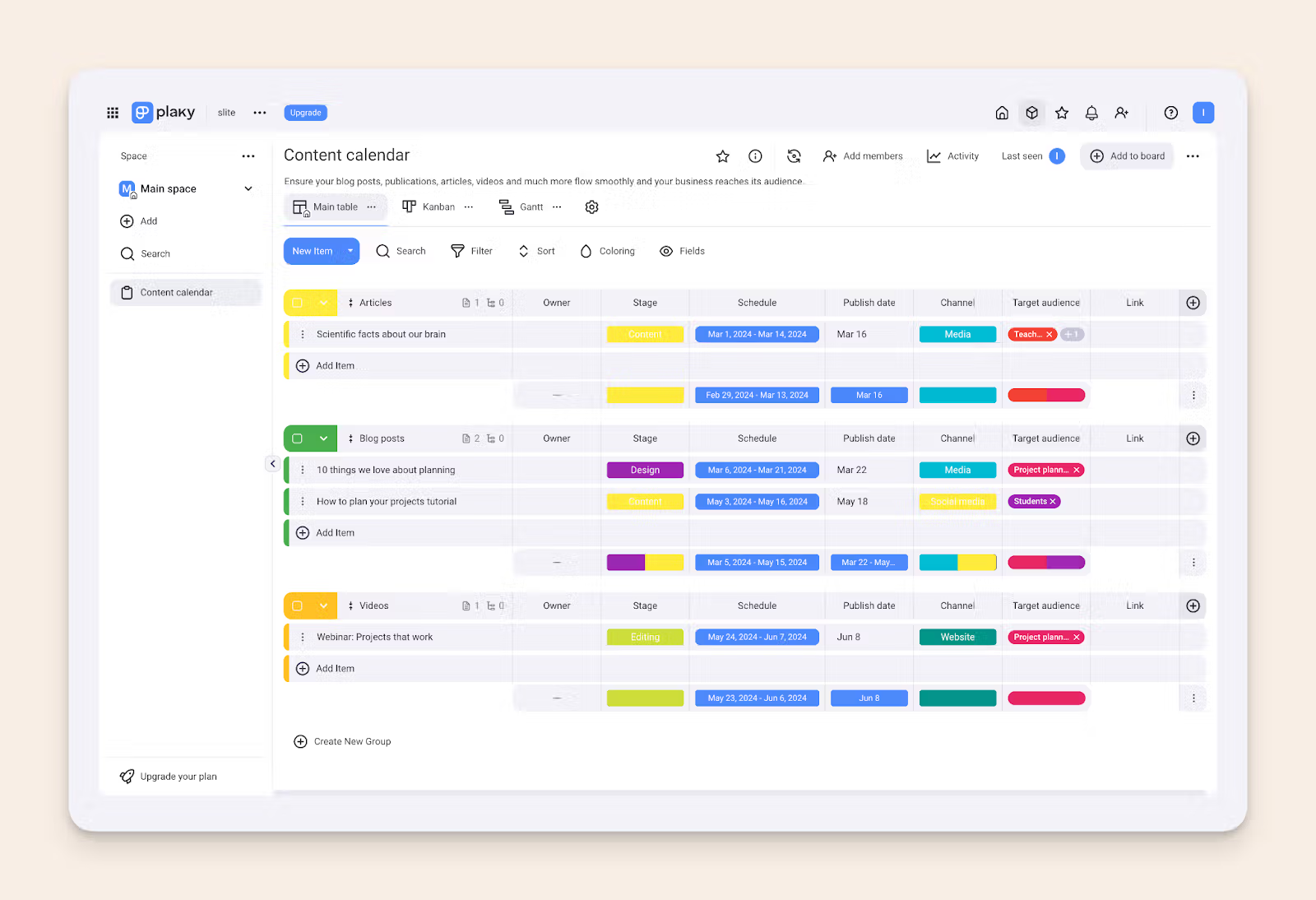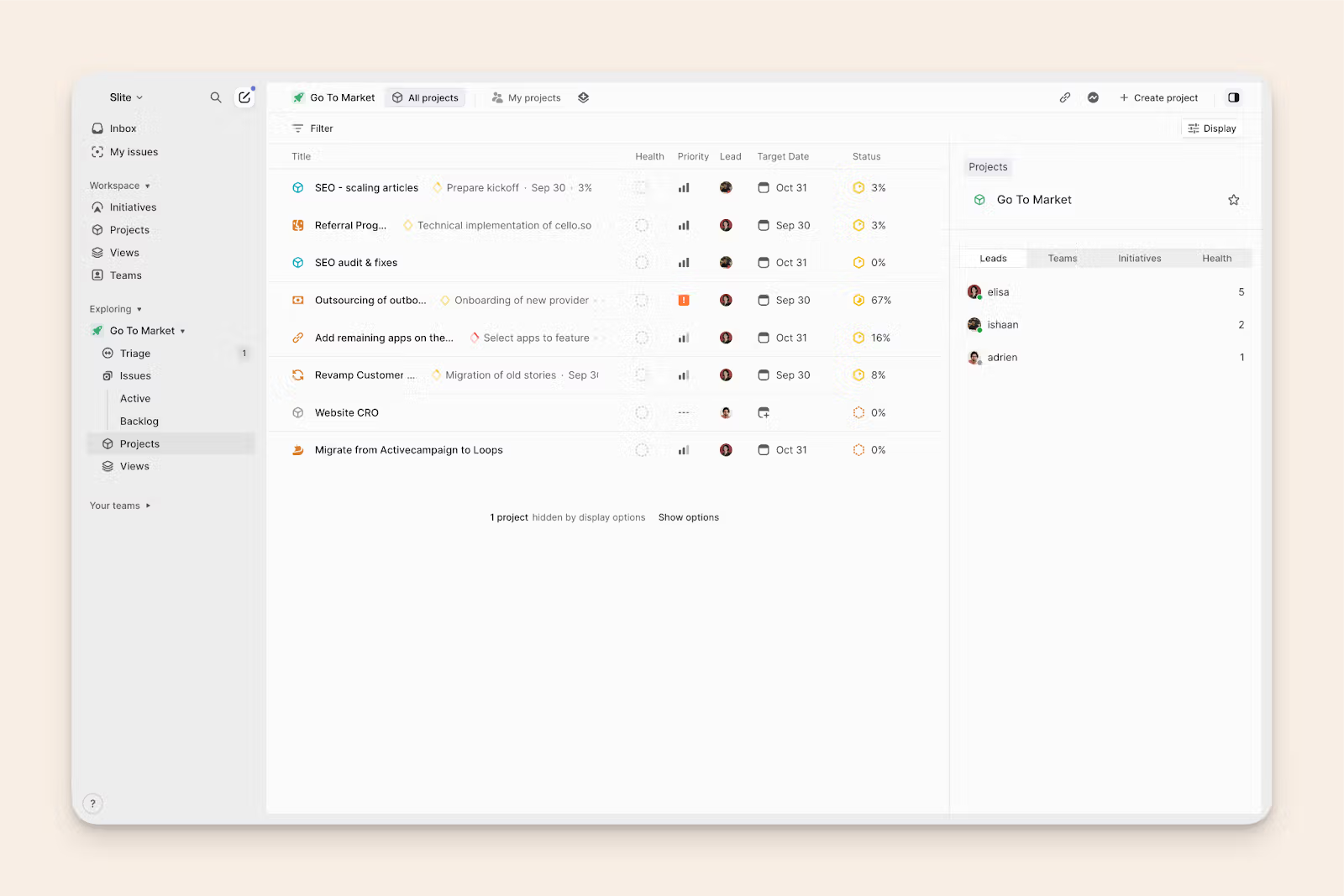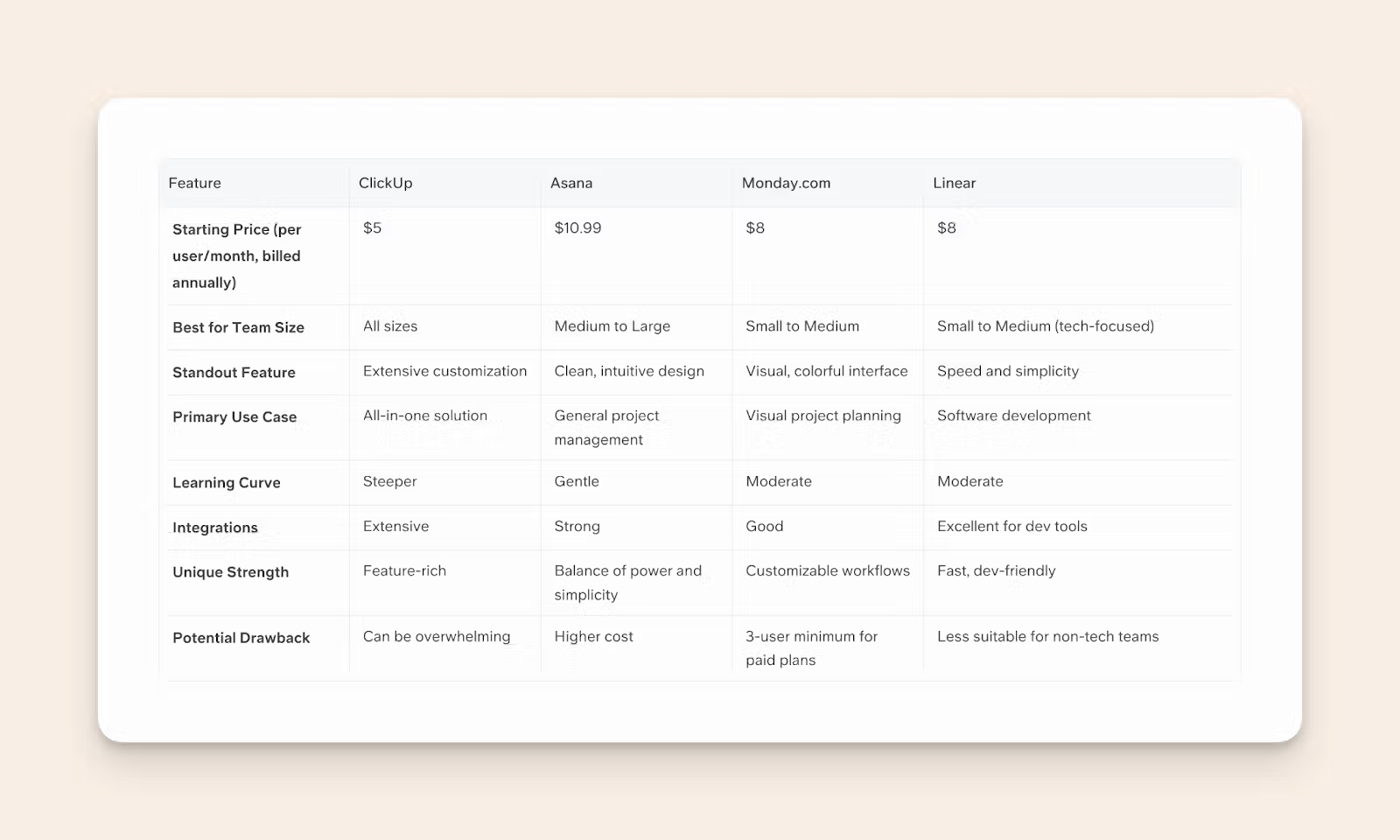Trello took the project management space like a storm with its visual Kanban-style boards and drag-and-drop interface. It quickly gained popularity among individuals and teams across industries, offering an easy way to organize tasks, manage project organization, and track project progress through effective task management.
When Trello was acquired by Atlassian in 2017, its power users expressed concerns and called the acquisition “depressing.” (source)
Why people are looking for a Trello alternative
Trello’s journey from beloved tool to a suite-product follows a familiar arc in the tech world:
- Company changes: Atlassian’s acquisition of Trello in 2017 marked the beginning of shifts in the product’s direction.
- Performance issues: By 2018, users began reporting slowdowns, especially with large boards or multiple integrations. (source)
- Feature limitations: As projects grew more complex and teams needed to manage multiple projects, Trello’s simplicity became a drawback.
- Growing teams found themselves requiring advanced features that Trello didn’t offer.
- Pricing concerns: Recent changes to Trello’s pricing structure left many questioning its value, particularly for individuals and small teams.
- Diverse options: Many users have found that other tools offer more robust features and better performance, making them viable alternatives to Trello.
Free Alternatives
1. Plaky
Plaky, a part of cake.com’s software suite, is a reliable project management software with extremely generous pricing models.

What I like
- All views by default. Plaky provides Kanban boards, list views, and Gantt charts. It also includes task dependencies, custom fields, and basic automation features, offering all essentials for project management without cost.
- Fast: The product is fast and snappy. While the UI and colour system could use improvement, the product is reliable. I could see myself using it for everyday work.
- Even the paid plans are quite nice. Plaky’s first paid plan starts at just $3.99/mo and goes beyond their essential suite. It delimits a couple of features and stores your activity and data for longer.
2. Nifty
Nifty goes beyond Trello’s boards. It gives you real project planning, collaboration, and tracking all in one place, and is still easy to use.

What I like:
Built for real teams: Unlike Trello’s card-based simplicity, Nifty gives you multiple project views (Kanban, List, Timeline, Calendar) so you can actually plan things, not just move cards around.
One workspace, many tools: With built-in chats, docs, time tracking, and goal-setting, Nifty reduces the need to juggle five different tools. Everything lives in one place, which keeps your workflow... well, flowing.
Progress tracking that makes sense: Nifty’s milestone-driven structure helps you connect tasks to outcomes. It’s not just about checking boxes, it’s about moving the needle.
3. Focalboard
Focalboard is an open-source project management tool developed by Mattermost, designed as a self-hosted alternative to Trello and Notion.

What I like
- Versatile views: Focalboard offers multiple ways to visualize your work, including Kanban boards, tables, and gallery views. This flexibility allows teams to adapt the tool to their preferred workflow.
- Integration with Mattermost: For teams already using Mattermost for communication, Focalboard integrates seamlessly, creating a unified workspace for collaboration and project management.
- Desktop and web applications: Unlike some open-source alternatives, Focalboard provides both desktop and web applications, making it accessible across different platforms and work environments.
- Customizable properties: You can create custom properties for your tasks, allowing for detailed and tailored project tracking that goes beyond basic Kanban functionality.
- Performance tracking: Focalboard includes features for tracking project performance, such as progress reporting and workload mapping, helping teams understand and improve their project efficacy.
If you’re seeking a free, customizable Trello alternative, Focalboard could be your answer. You’ll appreciate its versatility and integration with Mattermost if you’re already using it.
Keep in mind that as a newer tool, you might find fewer features compared to more established alternatives. If you’re not tech-savvy, setting up a self-hosted solution could be challenging.
Focalboard is ideal if you value open-source software and want more control over your project management tool.
Paid Alternatives
1. ClickUp
ClickUp is a definitive all-in-one and a big contender in the project management space. Pricing starts at $5/user/month (billed annually)
What I like
- Flexible views: Easily change between boards, lists, calendars, and Gantt charts. You’re not stuck with just one way to work.
- Lots of features: You get task links, time tracking, custom fields, automations, and the ability to assign tasks all in one place. ClickUp gives you many tools for project management.
- Good value: ClickUp offers a lot without costing too much. You get high-end features at a fair price.
Potential turn-off
- Can be too much: As one of the big names in productivity tools, ClickUp keeps adding new features to cover all parts of your work. This big-picture approach can make the tool hard to use sometimes.
ClickUp wants to be your go-to tool for all work tasks, trying to replace many other apps you might use. While this gives you powerful options, it also means it takes more time to learn. The tool works best for those who spend time exploring and setting it up for their needs, but casual users might find it too complex.
2. Asana
Asana’s a clean project management tool with a refined UI. It's more mature as a product than ClickUp. Its maturity is evident in their project views’ focus on milestones. Pricing starts at $10.99/user/month (billed annually)
What I like
- Clean design: Asana's interface is simple and easy to use. You won't waste time figuring out where things are.
- Workflow builder: You can create custom workflows and set up rules to automate routine tasks. This saves time and reduces mistakes.
- Strong reporting: Asana gives you clear insights into project progress and team productivity. You can easily see what's working and what's not.
Potential turn-off
- Higher cost: Asana is pricier than some other options. This might be a problem if you're on a tight budget, especially for larger teams.
Asana stands out for its balance of power and simplicity. It's less overwhelming than ClickUp but still offers advanced features. The tool shines in managing complex projects across different teams. However, the higher price point means you need to be sure you'll use enough of its features to justify the cost.
Asana works well for mid-sized to large companies that need a robust, user-friendly tool for project management. It's especially good if you want to improve team coordination and get a clear view of overall project health.
3. Monday.com
Monday.com is a colorful project management tool that makes work visual. Its strength lies in turning complex tasks into simple, eye-catching boards. The platform shines in creative fields and marketing teams, where visual planning is key. Pricing starts at $9/seat/month
What I like
- Eye-catching design: Monday.com's colorful interface makes project management more engaging. You might actually enjoy using it.
- Ready-to-use templates: Get started quickly with pre-made setups, or create your own to match your exact needs.
- Plays well with others: Monday.com connects smoothly with many popular tools like Slack, Google Drive, and Zoom. This helps you create a seamless workflow.
Potential turn-off
- Three-user minimum: You can't sign up for paid plans if you have fewer than three users. This makes it less suitable for very small teams or solo workers.
Monday.com shines in making complex work visually simple. It's great for teams who want a more modern, less corporate-feeling tool. The platform is flexible enough to handle various project types, from marketing campaigns to software development.
4. Linear
We use Linear as our primary project management tool at Slite, and it's been a game-changer for our team. You'll find it strikes an excellent balance between simplicity and power, which is why we chose it after trying various other options.
Our journey to Linear wasn't straightforward. We started with Trello, which was too basic for our needs - essentially just a fancy Kanban board. Then we overcorrected with ClickUp, which had every feature imaginable but became too complex for wide adoption in our team.
Linear hit the sweet spot for us. You'll appreciate its clean design and blazing-fast performance. Our tech team, led by our CTO Pierre, is "extremely pleased" with it. Here's what we love about Linear:
- The interface is lightning-fast and responsive, making daily use a breeze
- You can set up automated workflows easily, saving time on repetitive tasks
- If you're a developer, you'll love the GitHub integration - it's seamless
- We rely on its real-time updates and notifications to stay on top of issues
We've integrated Linear deeply into our workflow. You'll find it particularly useful for collaborative issue triaging. As Pierre notes, "We're spending quite some time on the tool to collaboratively triage issues. It's instant, and we can just think about the issues themselves and not the painful process of jumping around dozens of issues."
We've also set up real-time alerts in Slack when bugs are created in Linear. This keeps everyone in the loop and helps us address issues promptly. Plus, we've linked it with Intercom, so when a user reports a bug, it's automatically created in Linear with the Intercom conversation attached for context.
Our team’s so used to Linear that our Go To Market (GTM) Team has started to use Linear for their tasks as well:

You might wonder how we use Linear alongside Slite. While Linear manages our project tasks, we use Slite for comprehensive documentation. We embed Linear cards directly into our Slite docs, giving everyone easy access to project status while allowing the dev team to use Linear for detailed tracking.
Pricing starts at $8/user/month (billed annually), and there's a free plan you can try if you have a small team.
If you value speed and simplicity in your project management, especially if you're in tech, we think you'll find Linear as useful as we do. It's powerful enough for our developers, yet simple enough for everyone else - and that's why it's become an essential part of our toolkit at Slite.
Choosing your alternative to Trello: How to decide
When selecting a project management tool to replace Trello, consider these key factors:
Team Size and Structure
- Small team (1-10): Consider ClickUp's free plan or Asana's basic tier.
- Medium team (10-50): Look at Monday.com or Asana for scalable options.
- Large team (50+): Linear or ClickUp might offer better enterprise features.
Primary Use Case
- Software development: Linear shines here with its GitHub integration.
- Marketing campaigns: Monday.com's visual approach could be beneficial.
- General project management: Asana offers a good balance for various needs.
Feature Requirements: Kanban Boards
- List your must-have features (e.g., time tracking, custom fields, automations).
- Match these against each tool's offerings. For instance, ClickUp is feature-rich, while Linear focuses on core functionalities.
Budget
- Tight budget: ClickUp starts at $5/user/month.
- Mid-range: Monday.com and Linear at $8/user/month.
- Higher budget: Asana at $10.99/user/month might offer more comprehensive features.
Learning Curve
- Need simplicity? Asana might be easiest to adopt.
- Okay with complexity for power? ClickUp offers extensive customization.
Integrations
- List your critical integrations (e.g., Slack, Google Workspace, GitHub).
- Check each tool's native integrations and Zapier support.

Action Steps
- Identify your top 3 project management challenges.
- Sign up for free trials of 2-3 tools that seem to fit your needs.
- Involve key team members in testing each tool for a week.
- Compare notes on user experience, feature match, and team adoption.
Quick Decision Notes:
- If you need a visually appealing, customizable solution: Try Monday.com
- For a balance of power and simplicity: Asana might be your best bet
- If you're tech-focused and value speed: Give Linear a shot
- When you need an all-in-one powerhouse: ClickUp could be the answer
Remember, the best tool is one that your team will actually use. Prioritise ease of adoption and alignment with your workflow over an exhaustive feature list.
The Hidden Cost of Project Management Tool Switching
Choosing the right project management tool solves workflow issues but creates a new problem: information fragmentation.
Your tasks live in Linear, but requirements are in Notion, customer feedback exists in support tickets, and technical decisions happen in Slack threads.
Project managers become human bridges, constantly switching between tools to gather context. A simple question like "Why did we deprioritize Feature X?" requires checking multiple platforms to understand the complete picture.
Super.work addresses this by searching across all your tools simultaneously. Instead of manually piecing together project context from five different platforms, ask "What blocked the mobile checkout feature?" and get comprehensive answers from Linear tickets, Slack discussions, support feedback, and planning documents.
This doesn't replace your project management tool - it enhances it by ensuring complete context for decisions. Super typically pays for itself by recovering time spent hunting for scattered project information.

